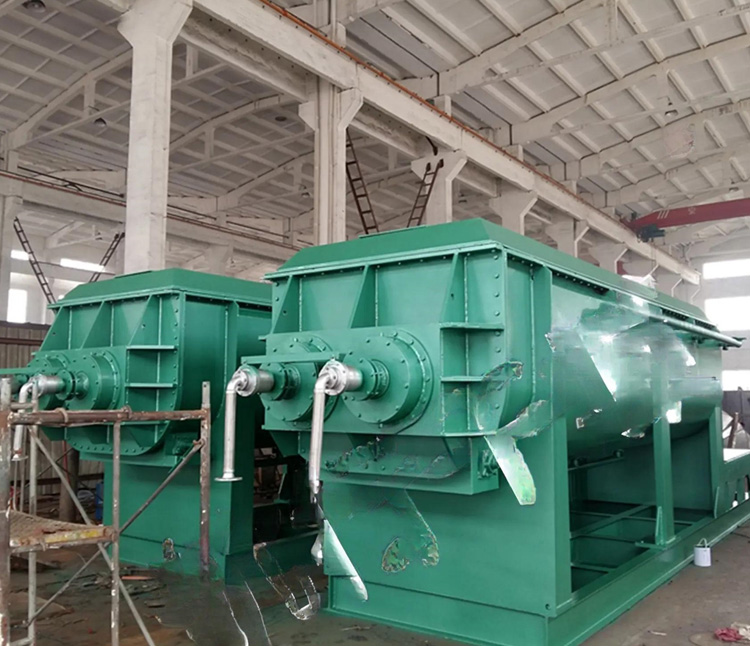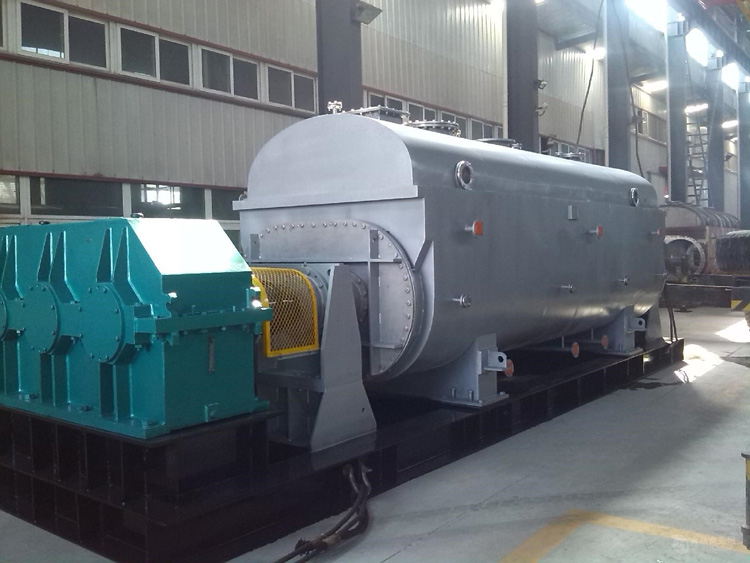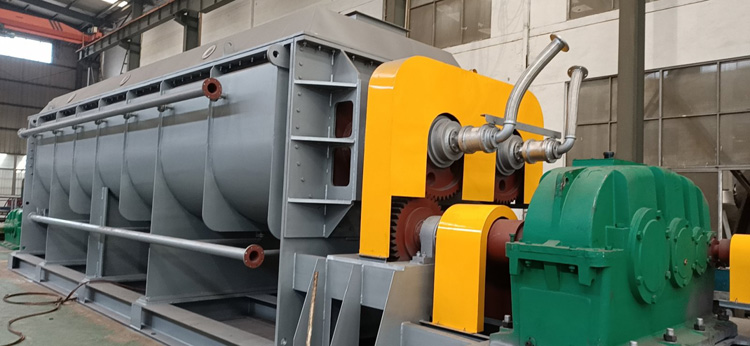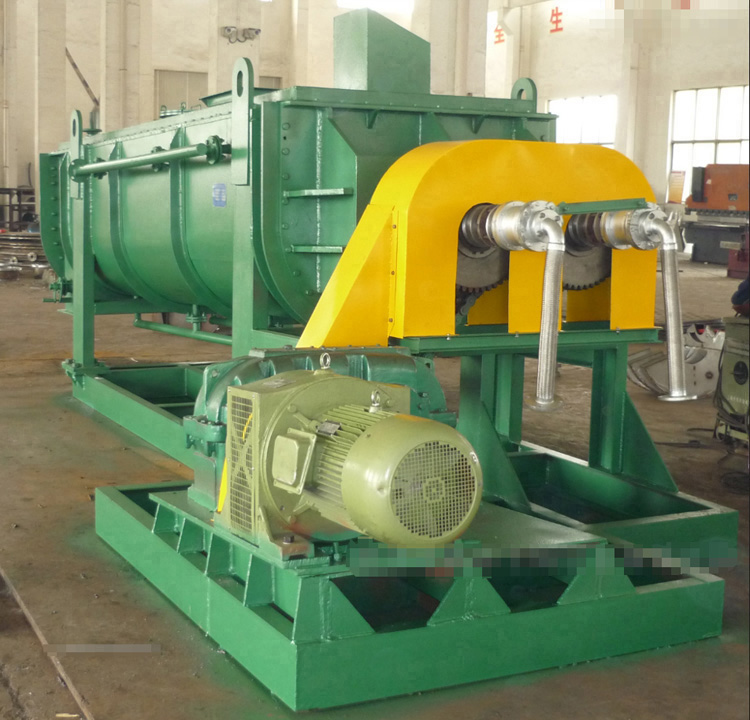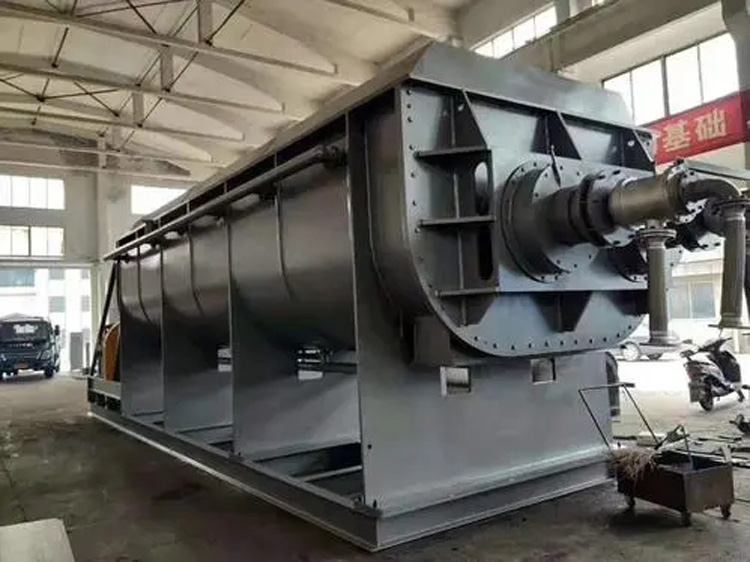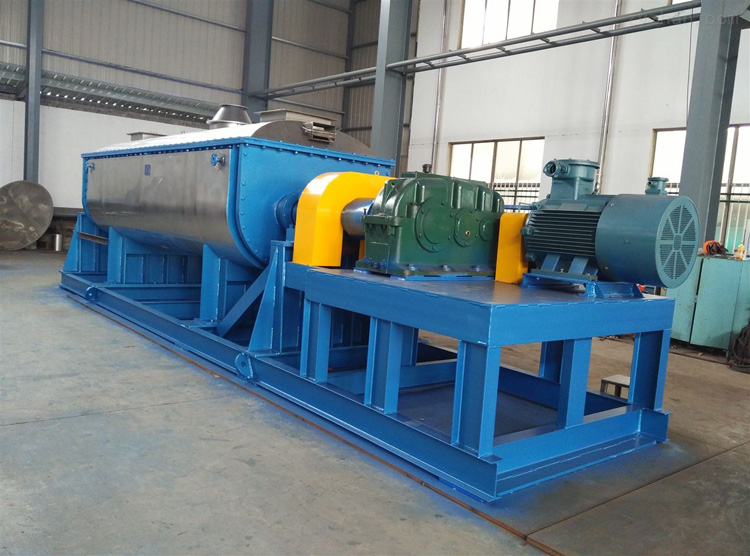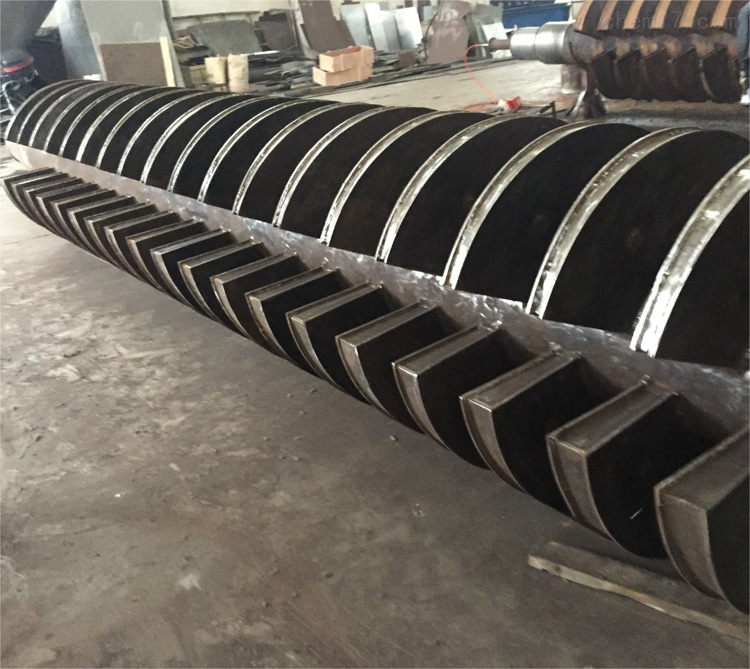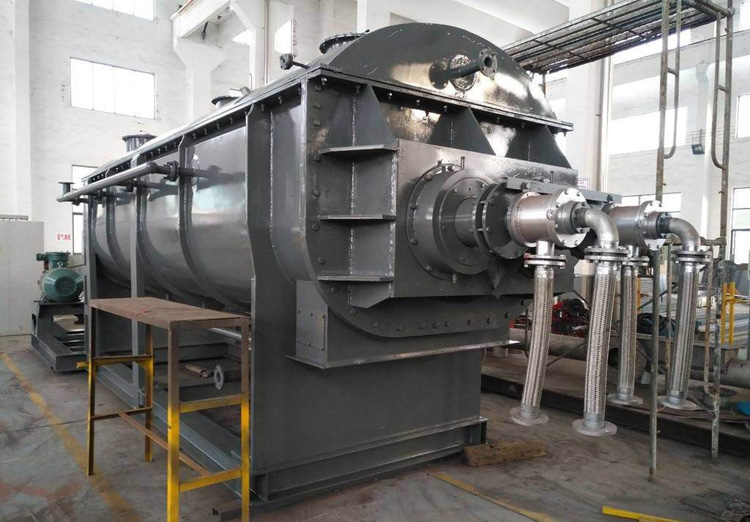Product Introduction
This product can indirectly heat or cool paste-like, granular, powdery, and slurry materials, and can complete unit operations such as drying, cooling, heating, sterilization, reaction, and low-temperature combustion. The special wedge-shaped stirring heat transfer paddles in the equipment have high heat transfer efficiency and self-cleaning functionality for the heat transfer surface.
Working Principle
The hollow shaft is densely arranged with wedge-shaped hollow paddles, and the heat medium flows through the paddles via the hollow shaft. There is a large heat transfer area within the unit effective volume, and the temperature of the heat medium ranges from -40℃ to 320℃. It can be steam or liquid types such as hot water, heat transfer oil, etc. Indirect conduction heating does not carry air to take away heat; all the heat is used to heat the material. Heat loss is only through the heat dissipation to the environment through the insulation layer of the equipment body. The wedge-shaped paddles have self-cleaning functionality for the heat transfer surface. The relative movement between material particles and the wedge-shaped surface creates a scrubbing action that can remove attached materials from the wedge-shaped surface, ensuring a clean heat transfer surface during operation. The casing of the paddle dryer is omega-shaped, and it typically contains two to four hollow stirring shafts inside. The casing has sealed end caps and a top cover to prevent material dust from leaking out and to fully exert its function.
The heat transfer medium flows through the rotating union, passing through the shell jacket and hollow stirring shaft. The hollow stirring shaft has different internal structures depending on the type of heat medium to ensure optimal heat transfer effects.
Performance Features
-
Low energy consumption of paddle dryers: Due to indirect heating, without a large amount of air carrying away heat, and with insulation layers on the outer walls of the dryer, for paste-like materials, evaporating 1kg of water only requires 1.2kg of steam.
-
Low system cost of paddle dryers: With a large heat transfer surface within the unit effective volume, processing time is shortened, and equipment dimensions are reduced, greatly saving on construction area and space.
-
Wide range of materials processed: Using different heat media, it can handle both heat-sensitive materials and materials requiring high-temperature processing. Common media include: steam, heat transfer oil, hot water, cooling water, etc.
-
It can operate continuously or intermittently and can be applied in many fields.
-
Minimal environmental pollution: Not using air to carry materials results in very little dust carryover. The evaporation of material solvents is minimal, making it easy to handle. For materials with pollution or solvent recovery requirements, closed-loop circulation can be adopted.
-
Low operating costs: The structure results in minimal wear and very low maintenance costs.
-
Stable operation: Due to the special compression-expansion stirring action of the wedge-shaped paddles, material particles are fully in contact with the heat transfer surface. The gradients of temperature, humidity, and mixing degree of the material within the axial interval are very small, ensuring the stability of the process.
Adaptability to Materials
Paddle dryers have been successfully used in fields such as food, chemical, petrochemical, dye, and industrial sludge. The characteristics of heat transfer, cooling, and stirring of the equipment allow it to complete the following unit operations: combustion (low temperature), cooling, drying (solvent recovery), heating (melting), reaction, and sterilization. The stirring paddles are also the heat transfer surface, increasing the heat transfer area within the unit effective volume and shortening processing time. The wedge-shaped paddles also have self-cleaning functionality for the heat transfer surface. The compression-expansion stirring function ensures uniform mixing of materials. Materials move "piston flow" along the axis, and the gradients of temperature, humidity, and mixing degree within the axial interval are minimal. Paddle dryers using heat transfer oil as the heat medium can perform low-temperature combustion work. For example: Dihydrate calcium sulfate (Ca2SO4·2H2O) combustion is transformed into hemihydrate calcium sulfate (Ca2SO4·1/2H2O). Sodium bicarbonate (NaHCO3) is calcined to form pure soda (Na2CO3), etc. Cooling media such as water or cooled brine can be used for cooling. For example: The paddle-type cooling alkali machine used in the soda industry replaces the old air-cooled cooling alkali machine, saving energy and exhaust gas treatment equipment, and reducing operating costs. Drying, the main function of the equipment, does not use hot air, making solvent recovery, energy consumption, and environmental control easy to handle in an ideal state. It is particularly suitable for materials that require solvent recovery, are flammable, easily oxidized, and heat-sensitive. It has been widely used in fine chemicals, petrochemical, and dye industries. The uniformity of temperature, humidity, and mixing degree within the axial interval allows the equipment to be used for heating or melting, or for some solid material reactions. It has been successfully used in the compound fertilizer and modified starch industries. Paddle dryers can be used for sterilization treatment of food and flour. The large heating area within the unit effective volume quickly heats the material to the sterilization temperature, avoiding long-term heating that changes the quality of the material.
Installation Structural Schematic Diagram
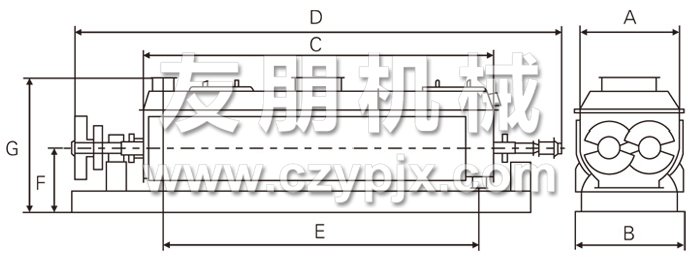
Technical specifications
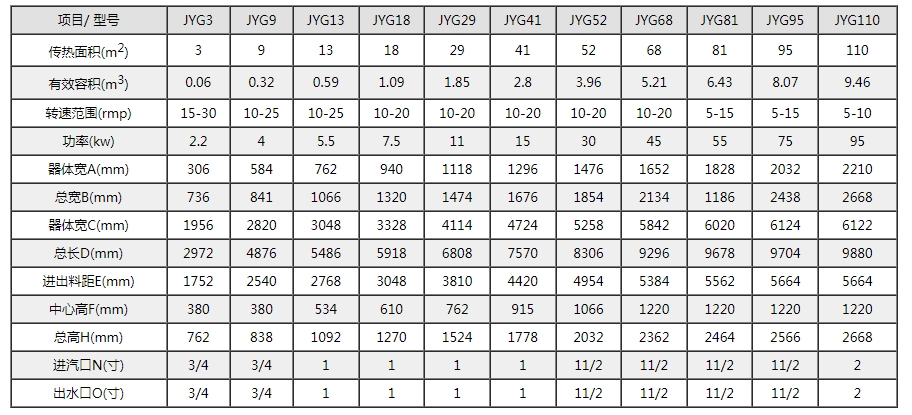
Hot Tags:
hollow blade dryer JYG blade dryer Advanced JYG blade dryer


